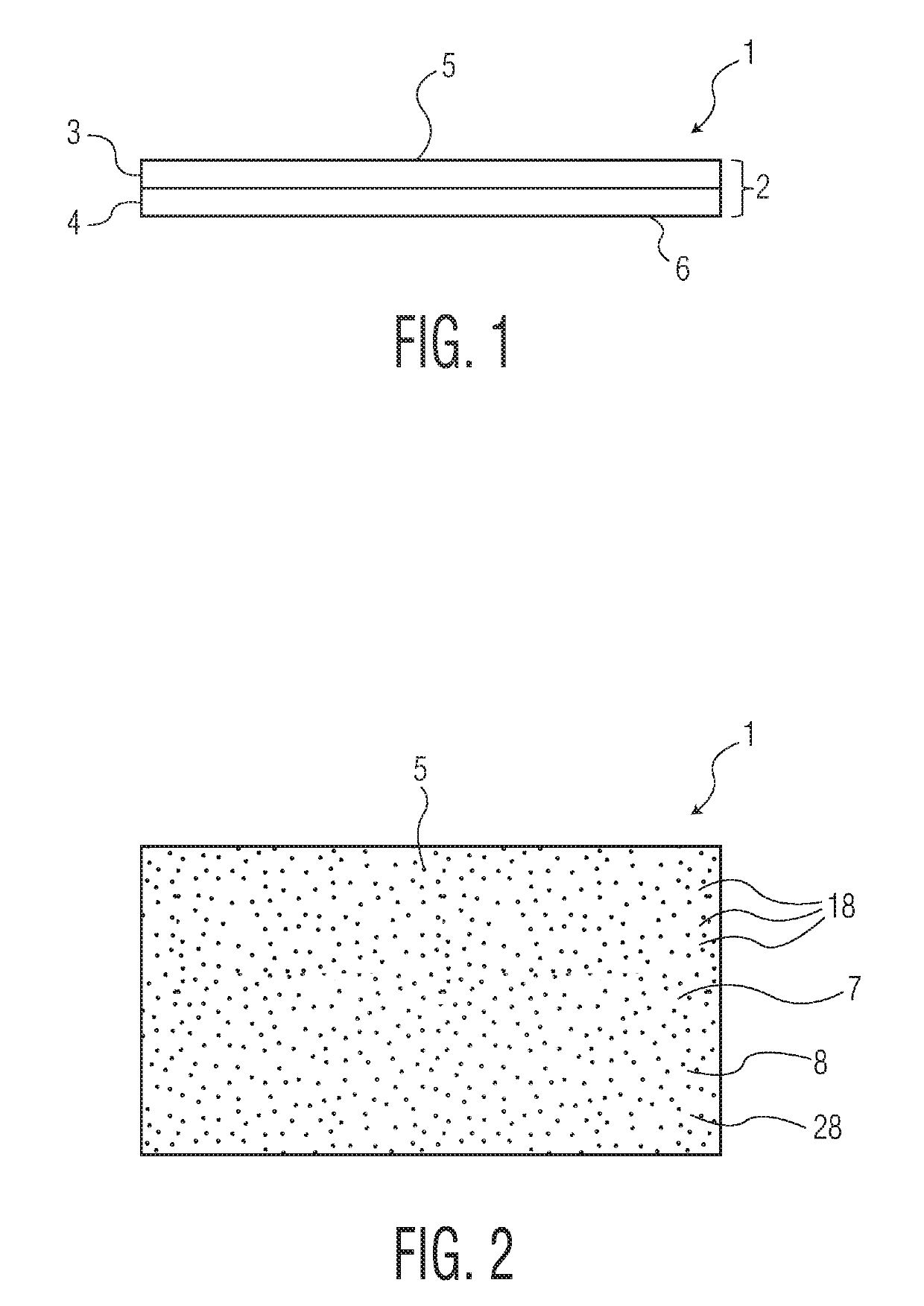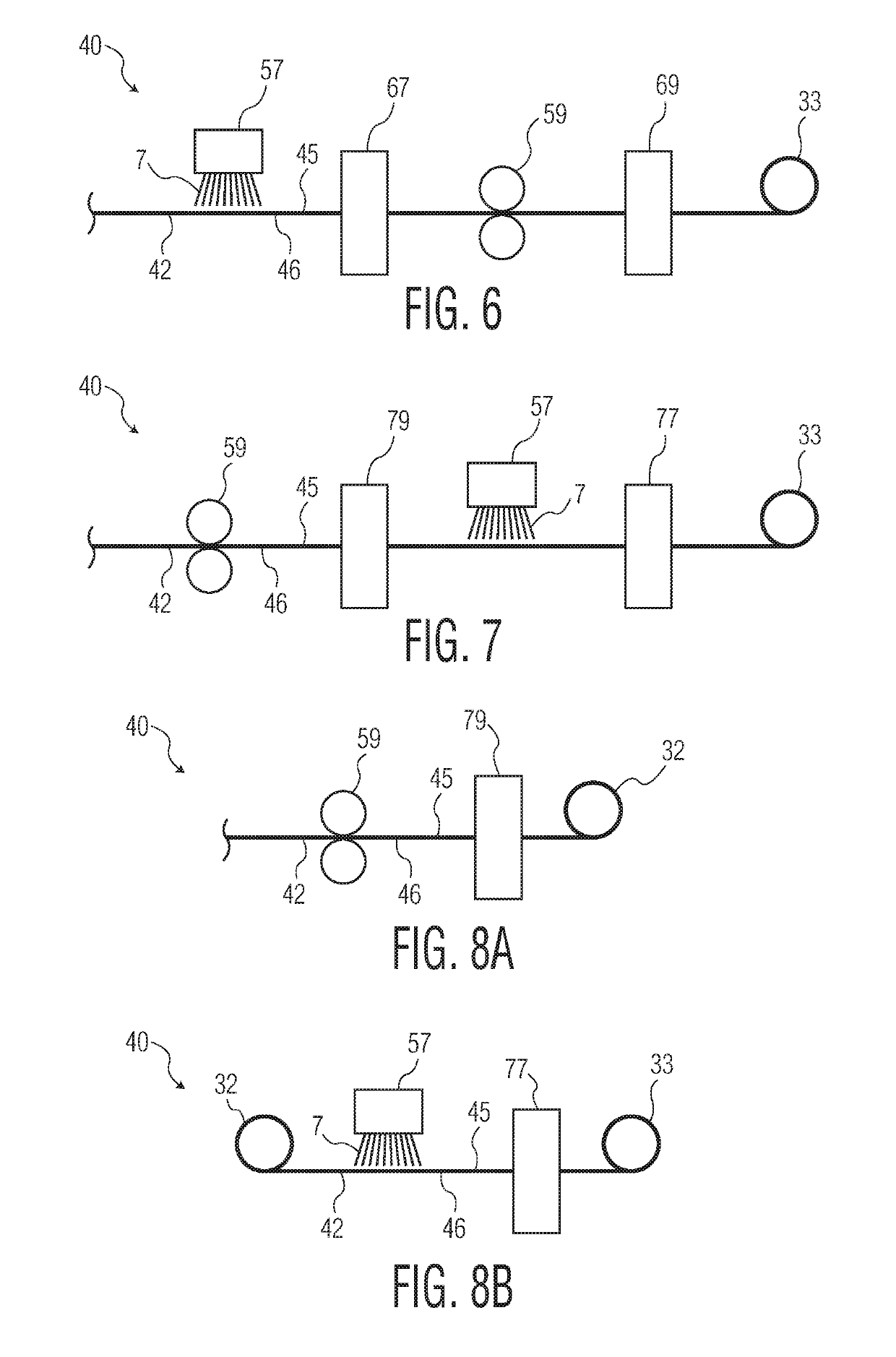Method of making dispersible wet wipes via patterned binder application
a technology of patterned binder and wet wipes, applied in the field of making wet wipes via patterned binder application, can solve the problems of affecting the effect of abrasion, so as to achieve the effect of not losing significant strength, and reducing the amount of agitation
- Summary
- Abstract
- Description
- Claims
- Application Information
AI Technical Summary
Benefits of technology
Problems solved by technology
Method used
Image
Examples
examples
[0112]Examples 1-4 in the Table are dispersible wet wipes incorporating principles of the present invention. Each Example and the Control code employ a wipe substrate having two sub-layers of cellulosic fiber.
[0113]The first layer of each Example was an uncreped through-air dried (“UCTAD”) tissue made of bleached Northern softwood kraft (NSWK) fibers and having a basis weight of 45 grams per square meter. To form the tissue, an aqueous solution of softwood fibers was pumped in a single layer through a headbox. The fiber was diluted to between 0.19 and 0.29 percent consistency in the headbox to ensure uniform formation. The resulting single-layered sheet structure was formed on a twin-wire, suction form roll. The speed of the forming fabric was 900 feet per minute (fpm). The newly-formed web was then dewatered to a consistency of about 20 to 27 percent using vacuum suction from below the forming fabric before being transferred to the transfer fabric, which was traveling at 738 fpm (1...
PUM
| Property | Measurement | Unit |
|---|---|---|
| gauge length | aaaaa | aaaaa |
| temperatures | aaaaa | aaaaa |
| pressure | aaaaa | aaaaa |
Abstract
Description
Claims
Application Information
 Login to View More
Login to View More - R&D
- Intellectual Property
- Life Sciences
- Materials
- Tech Scout
- Unparalleled Data Quality
- Higher Quality Content
- 60% Fewer Hallucinations
Browse by: Latest US Patents, China's latest patents, Technical Efficacy Thesaurus, Application Domain, Technology Topic, Popular Technical Reports.
© 2025 PatSnap. All rights reserved.Legal|Privacy policy|Modern Slavery Act Transparency Statement|Sitemap|About US| Contact US: help@patsnap.com



